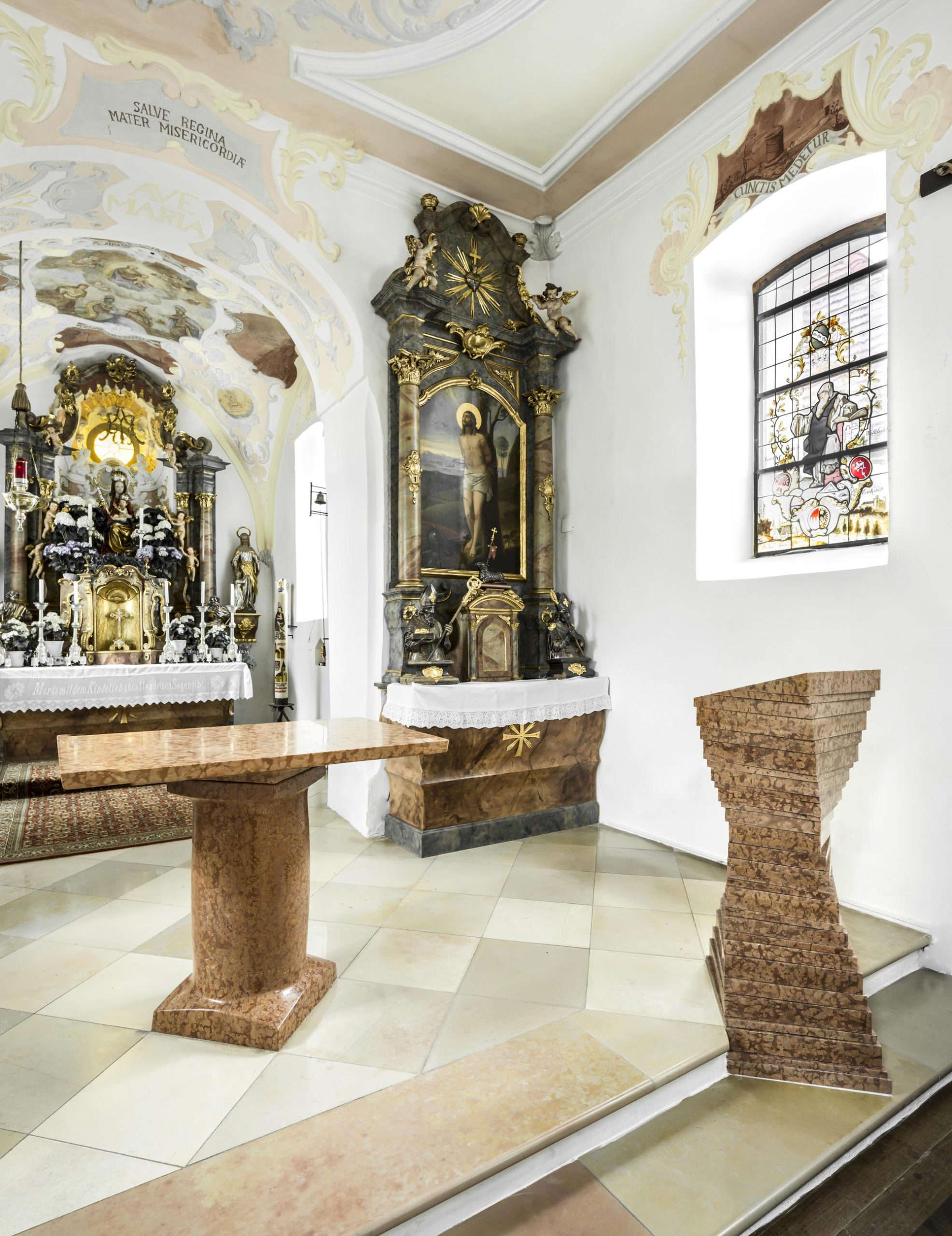
The altar and ambo are connected to the existing structure by a torsion, are precisely located and firmly connected to the ground.
The ambo responds to the convex entasis of the altar column with a concave column form.
Both forms merge into a unity.
As a symbol of God-given truth, numbers have had semantic meaning in Christian architecture ever since the Middle Ages.
In the interpretation “secundum mutliplicationem” (Hugo of St Victor, around 1100-1141) the meaning of the number is deduced from the sense of its factors.
Thus, the number 12 in its decomposition (3 x 4) represents the mystical interpenetration of the number 3 as number of the divine and the number 4 as number of the created world and refers to the mission of the 12 apostles to proclaim the faith in all four corners of the earth.
In the interpretation “secundum partium aggregationem” the degree of perfection of a number is examined.
A number is considered perfect (numeri perfecti) if it is equal to the sum of all its positive parts except itself.
Between 1 and 1000 only 6, 28 and 496 are numeri perfecti.

The ambo consists of a total of 28 layers in three different dimensions.
3 layers form the base, which intersects with the existing step.
The central middle stone slab has a dimension of 3 dm x 3 dm. From this inner center, 12 layers each twist and enlarge upwards and downwards, assuming their specific functions.
The upper part of the anvil is made to rotate so that the word of God can be presented to the people after the service.
The existing niche in the wall is used as a book and note rack.
Like the altar, the ambo is made of the red limestone “Rosso Verona”.



completion:
2014
addresse:
Monheimerstraße 113
86633 Neuburg an der Donau
Germany
team:
Susanne Veit-Aschenbrenner
Oliver Aschenbrenner
Johannes Marschütz
Pawel Zabczynski
model construction:
Michael Ratheiser
pictures:
© Leander Hopf